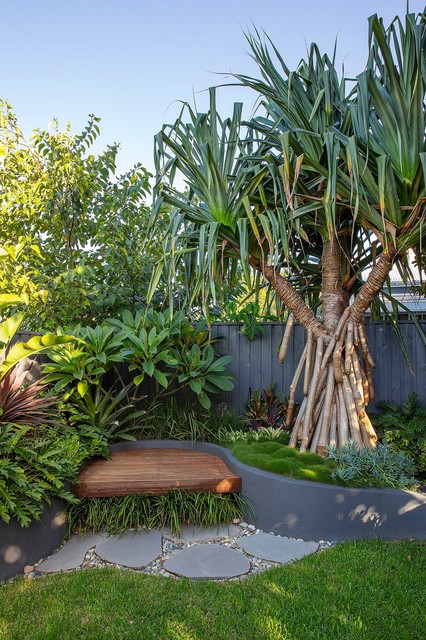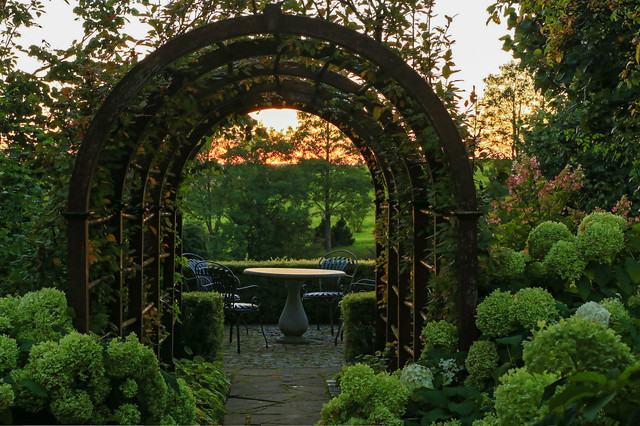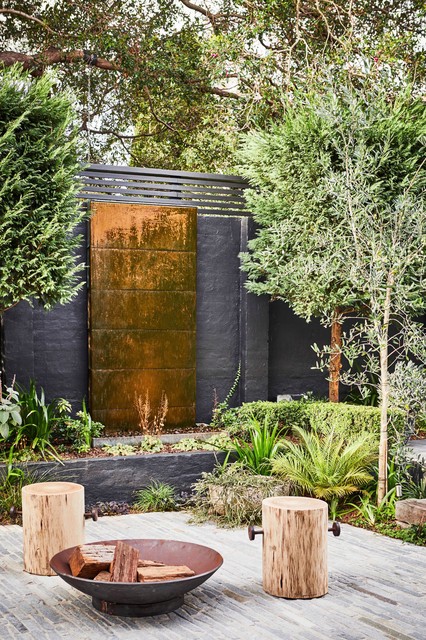Spending time in the garden can be a wonderful mood lifter and stress reliever. For that reason, health & other facilities have long incorporated healing gardens into their treatment for patients, family members and staff. But these healing spaces aren’t limited — they also have a place in the home garden.
We spoke with Evette Moran, designer of the award-winning garden at the Mark Moran Vaucluse senior living facility in New South Wales, Australia, who shared her tips for creating a home garden that uses nature to heal the body and soul.


Key Design Considerations for a Healing Garden
- Sight. When designing your healing garden, think about how the colors in your flowers and foliage will work together. Look to balance plenty of soft, soothing colors with a few pops of energizing brights. Snapdragons are one of my favorite flowers, as they come in a variety of bright and gentle colors.
- Taste. Consider planting citrus trees, such as orange, lemon or lime, or vegetables that guests who visit your garden can pick and consume.
- Touch. When selecting plants, take into account their texture — the more variety in texture the better. Soft ornamental grasses and ferns are two of my favorites. For stones and paving, choose smooth pebbles and curved paving over sharp or rigid options.

- Sound. Consider native plants and other pollinator attractors to draw chirping birds and buzzing bees to your garden.
- Scent. Opt for plants that emit an enticing and calming scent, such as lavender and lemon balm, or choose fragrant herbs such as mint, rosemary or lemon grass.
- An emotional connection. Add features that your visitors will be drawn to — a trickling water feature or a scented flower that reminds them of their childhood, for example.

Other Appealing Additions to a Healing Garden
- Water. It has an almost spiritual element that helps promote flow and energy. Consider adding a pond or water feature to your garden design.
- Shade. Both plants and people need shade in the garden during hot summer months. Shade also enhances the visual appeal of a garden — changes in the light and shade in a garden create a dynamic landscape that allows visitors to come back time and time again to something new.
- Seating. Include seating in shaded parts of the garden for rest or reflection.
- Plants for bird life and bees. Including plants and flora that attract birds and bees keeps the garden active and connects it to the larger environment. The white-faced heron that regularly visits the koi pond at our facility, for example, connects us to the ocean.

More Design Tips
- Add the element of surprise. Draw visitors toward different parts of the garden and offer a surprise, whether it’s a mango tree next to a lime tree or a pretty strawberry patch in an unexpected spot.
- Include cascading plants. Smooth out hard edges and create a sense of abundance in your healing garden by choosing plants and herbs that have a tendency to spill over walls and onto pathways.

- Create zones. Design different “rooms” within your garden with different colors and points of interest. For example, a vegetable garden would allow guests to taste fresh produce, a colorful flower arrangement would be visually appealing, and a native-plant portion would bring in native wildlife and create intriguing sounds.
- Soften lines. Rather than including straight paths, for example, design them so that visitors gently meander through the garden to create a sense of relaxation and wonder.
- Smooth the edges. You’ll want to steer clear of jagged edges in hardscaping in a healing garden. Pathways, in particular, should be smooth, safe and comfortable to use — especially if elderly visitors will be using the garden.

Spending time in the garden can be a wonderful mood lifter and stress reliever. For that reason, health & other facilities have long incorporated healing gardens into their treatment for patients, family members and staff. But these healing spaces aren’t limited — they also have a place in the home garden. (cited)


Healing gardens have a special place in garden design. When you are creating a garden from a healing perspective, it is important to make sure all the senses — sight, smell, taste, touch and hearing — are engaged.This allows visitors to form an emotional connection with the space, which can lift their spirits and speed up the healing process. You’ll also want to make sure the space is comfortable and easy to navigate, so it can be used safely by those who are recuperating or otherwise physically limited.